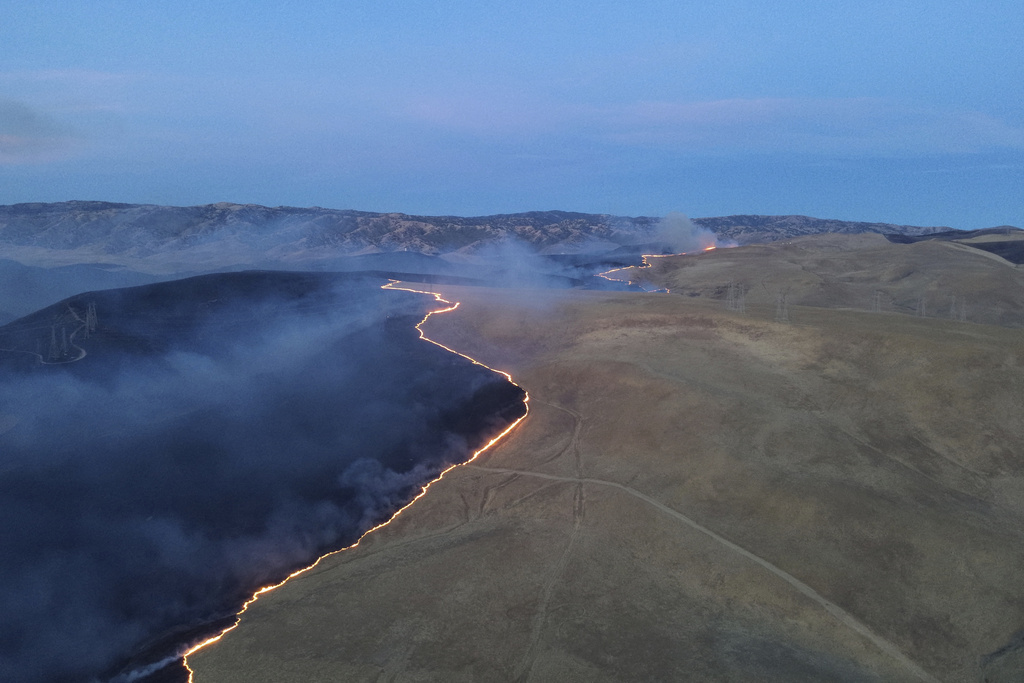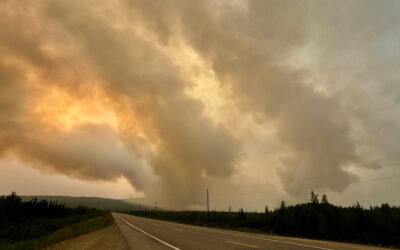
This photo released by the The California Department of Forestry and Fire Protection shows the Corral Fire burning on Sunday, June 2, 2024, near Tracy, Calif. (California Department of Forestry and Fire Protection via AP)
The Corral Fire was 75% contained after scorching more than 22 square miles (57 square kilometers) during the weekend, the California Department of Forestry and Fire Protection said. One home was destroyed and two firefighters were injured.
The wind-driven fire erupted Saturday afternoon on land managed by the Lawrence Livermore National Laboratory, one of the country’s key centers for nuclear weapons science and technology. The cause was under investigation.
Thousands of people in the area, including parts of the San Joaquin County city of Tracy, were ordered to leave for evacuation centers Saturday. Evacuation orders were lifted when improved weather allowed firefighters to make progress against the flames.
The wildfire presented no threat to any laboratory facilities or operations, Lawrence Livermore spokesperson Paul Rhien said in a statement to The Associated Press early Sunday.
California has had back-to-back wet years that ended drought but spawned vegetation growth. Cal Fire’s outlook for 2024 noted that increasing dryness from mid-May to June would potentially lead to more small fires and a chance of larger fires depending on wind. The Corral Fire is by far the largest of more than 1,200 wildfires so far this year.
The progress against the Corral Fire comes just ahead of a predicted major heat wave. The National Weather Service has issued warnings for “dangerously hot conditions” throughout the Central Valley from Tuesday through Thursday.
Though this fire is nearly contained, in general, fire burns hotter when the weather is hotter, said Jacob Bendix, professor emeritus in the geography and the environment department at Syracuse University. He added that high winds can carry embers across freeways. Drought contributes to dangerous fire seasons, but paradoxically, wetter years can too.
“The flip side of that is that moisture allows for growth as well,” he said. In some places, a wet winter that causes vegetation to flourish can ultimately exacerbate the following fire season when all those plants dry out and become fuel.
That’s what happened in drought-stricken Osteen, Florida this weekend when a brush fire ran toward houses; multiple fire departments had to assist the forest service with the blaze, said Volusia County fire department’s battalion chief Scott Smoak. That fire is now 95% contained but warmer temperatures than usual for this time of year are a concern, he said, because they further dry out the fuels that built up during an unseasonably wet winter.
He encouraged locals to exercise extreme caution when burning anything and to avoid throwing cigarettes out windows or parking on grass. “The conditions we have, we’re trying to eliminate any potential for other fires to start,” he said.
Elsewhere in the country, at higher elevations, there tend to be fewer fires when the snowpack melts gradually over the course of the summer, but with higher temperatures overall due to climate change, more of that snow tends to fall as rain and the snowpack that does build up melts earlier. That, too, has been an issue in past years, Bendix said.
___
The Associated Press’ climate and environmental coverage receives financial support from multiple private foundations. AP is solely responsible for all content. Find AP’s standards for working with philanthropies, a list of supporters and funded coverage areas at AP.org.




